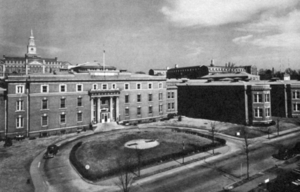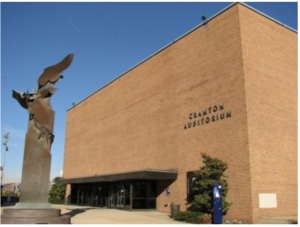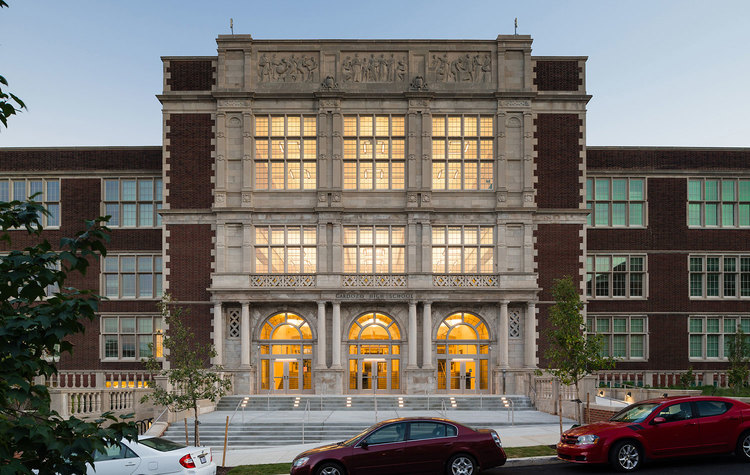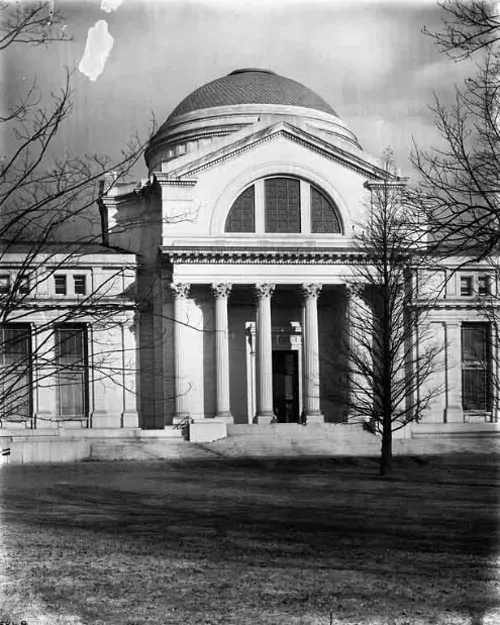The Capitol Ballet: 1960s Venues

1962
19th – 20th January
- The Capitol Ballet performed twice at the Cramton Auditorium, Howard University. The company was presented by the The Howard University Faculty Women’s Club. Carmen de Lavallade performed as a guest with the company, partnered by James Truitte.
[see more info in the 1960s “Programs” section]
1963
24th May
- The Capitol Ballet Company performed at Cardozo High School with Sylvester Campbell as a guest soloist.
1964
29th May
- The Capitol Ballet Company performed at the Cramton Auditorium, Howard University.
1965
18th June
- The Capitol Ballet Company performed at Cramton Auditorium, Howard University. The company performed with guest artists from New York City Ballet, Arthur Mitchell and Kay Mazzo who performed Jerome Robbins’ Afternoon of a Faun.
[see more info in the 1960s “Programs” section]
1966
19th May – 20th May
- The Capitol Ballet Company performed at Cramton Auditorium, Howard University.
[see more info in the 1960s “Programs” section]
1968
31st May
- The Capitol Ballet Company performed in honor of Rev. Dr. Martin Luther King, Jr. at Cramton Auditorium, Howard University.
6th July
- The Capitol Ballet Company performed at The Franklin Park Summer Festival, Roxbury, Boston. The following night the “Black Ballet Company from the Jones-Haywood School of Washington, D.C.” also performed. They appear to have performed Pocahontas choreographed by Doris Jones.
1969
27th June
- The Capitol Ballet Company performed at the National Museum of Natural History.
- The repertoire included:
- Asha No. 1 – to live music by the Lloyd McNeill Quartet – danced by Richard Moten and Thomas Stevens in front of a screen on which dancing figures were projected. The ballet was choreographed by Doris Jones, projection by John and Wanda Philibert and costumes by Claire Haywood.
- The company also performed Color and Ebony Concerto – both choreographed by Doris Jones.
- Dancers included: Virginia Johnson, Sandra Fortune, Annie McBryde, Lyndell Walker, Nokomis Jefferson, Richard Moten, and Thomas Stevens.
Sources:
The Washington Post, 19th May 1963, p. G7
The Washington Post, 24th May 1964, p. G4
The Washington Post, 6th June 1965, p. F19
The Washington Post, 15th May 1966, p. G8
The Washington Post, 30th May 1968, p. C6
The Boston Globe, 26th June 1968, p. 42
The Boston Globe, 7th July 1968, p. 64
The Boston Globe, 6th July 1968, p. 10
The Washington Post, 27th June 1969, p. B8
The Washington Post, 30th June 1969, p. B8
More about Howard University, Cramton Hall Auditorium
 Founded in 1867, Howard University is a private, research university comprised of 13 schools and colleges.
Founded in 1867, Howard University is a private, research university comprised of 13 schools and colleges.Students pursue studies in more than 140 areas leading to undergraduate, graduate and professional degrees. To date, Howard has awarded more than 120,000 degrees in the arts, the sciences, and the humanities, and more on-campus African-American Ph.D. recipients than any other university in the United States. The historic main campus sits on a hilltop in Northwest Washington blocks from the storied U Street and Howard Theatre. We are two miles from the U.S. Capitol where many students intern, and scores of alumni shape national and foreign policy.
Howard is a leader in STEM fields. The National Science Foundation has ranked Howard as the top producer of African-American undergraduates who later earn science and engineering doctoral degrees. The University also boasts nationally ranked programs in social work, business and communications. To date, we have produced one Schwarzman Scholar, three Marshall Scholars, four Rhodes Scholars, 12 Truman Scholars, 25 Pickering Fellows and more than 165 Fulbright recipients.
The College of Medicine is internationally regarded for its illustrious legacy of training students to become competent and compassionate physicians who provide health care in medically underserved communities at home and abroad. The College is a national leader in studying health disparities among people of color and is one of America’s top institutions for training women surgeons. The Howard University Health Sciences division includes the Howard University Hospital and the Colleges of Dentistry, Pharmacy, and as well as Nursing and Allied Health Sciences.
For more than 150 years, the Howard University School of Law has served as an advocate for social justice and as an architect of social change. It has produced more than 4,000 social engineers including the first African-American Supreme Court Justice, noted legislators, civil rights attorneys, mayors and public officials across the United States. It is the No. 1 law school for African Americans ranked by preLaw magazine.
The University’s motto Veritas et Utilitas, Truth and Service, represents a key part of our identity. The more than 10,000 undergraduate and graduate students dedicate hundreds of hours each year to service in nearby LeDroit Park, around the nation and throughout the world. Over the U.S. Peace Corps’ 50-year history, more than 200 Howard graduates have served as volunteers around the globe, the highest number among historically-Black colleges.
The University remains committed to further enhancing its strategic positioning as one of the top research universities in the nation. As we celebrate 154 years, we are uniquely positioned to have the next 150 years as glorious as the past.
Source:

Cramton Auditorium opened in 1961, and the National Symphony Orchestra completed the “first guest performance” in the facility. It is named for Louis C. Cramton, who served as a U.S. Congressman from Michigan from 1913-1931. He was a strong supporter of Howard University during his tenure.
Source:
Cramton Hall, Howard University
More about Cardozo High School

Cardozo High School’s name commemorates Francis L. Cardozo, an African-American teacher and principal at M. Street High School. The building was designed by architect William B. Ittner and was built between 1914 and 1916. The school’s philosophy revolved around “fostering student health and social welfare in addition to academic needs,” and Black students began attending on the “eve of desegregation in Washington, DC.” Today, the school still exists and is known as Cardozo Education Campus. The large Elizabethan-style building was well-equipped to host performances like those of Capitol Ballet.
Sources:
Central High School (Cardozo Senior High School), DC Historic Sites
Francis L. Cardozo High School, Hartman-Cox Architects
More about Franklin Park Summer Festival

In Roxbury, Boston, the Franklin Park Summer Festival ran performances for the Black community each summer from 1966 to 1968. The 1968 performances, which ran from July 4 to August 1, included highlights such as Boston Ballet, Capitol Ballet, Duke Ellington & Orchestra, the Boston Philharmonic, and the Jones-Haywood School of Ballet.
The park itself is 485 acres—Boston’s “largest open space”—and hosts the White Stadium and the Franklin Park Zoo, among other attractions.
Sources:
Franklin Park, City of Boston
Franklin Park theater starts season July 4, The Boston Globe
More about the National Museum of Natural History

After starting construction in 1904, the National Museum of Natural History (then called the U.S. National Museum) opened on March 17, 1910. Initially housing various collections related to United States history, eventually the art and portrait, technology, and history collections were moved out of this building to allow a focus on “anthropology and natural history.” The museum is still very much extant, a part of the Smithsonian Institution, hosting around 126.5 million artifacts.
Source:

